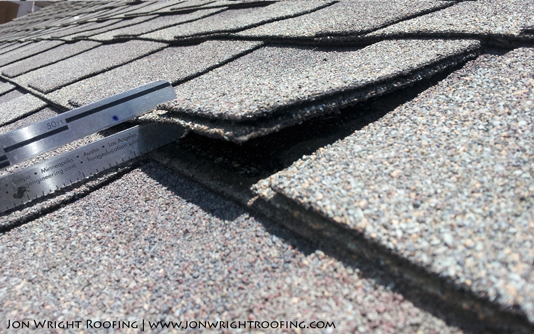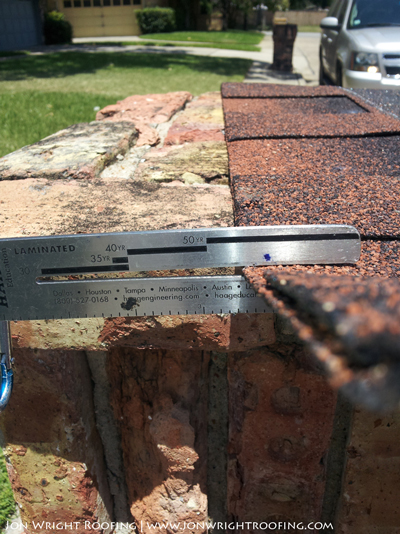Let me put the issue of shingle grade in a clearer light. Insurance companies are initially paying for the lowest grade of roofing upon their inspection. As most roofers are not familiar with industry history and changes, and because they are in a hurry, they just use whatever the insurance pays for and sometimes even put thinner, lighter, less warrantied products on.
The insurance adjusters want to do the right thing but sometimes their bosses tell them to do otherwise. I've been told by adjusters that their boss says they are broke and can't pay right. So you, the homeowner, pays.
If the gauge works to their advantage, they use it. An Allstate adjuster tried to say my replacement Class IV Timberline ArmorShield shingle was a 30 year because his Haag Engineering gauge said it was. If he had read their article (found here, question #12) on the usage he would have known the gauge does not apply to Class IV shingles. The product is made differently, and thickness and years in warranty do not effect impact resistance ratings.
They always look for a way to dumb down the roof. One of my previous customers in Irving has a 1995 Presitque Plus and it is a real looker. Thick and beefy but they want to put on today's "50 year" which is much thinner. She wants the same look but the adjuster says that he can only pay for what she has. So what's the problem?
Now he's looking at warranty, not thickness. If it has a higher warranty but gauges thinner, they pay for a thinner less warrantied roof product.
Demand similar! They will walk all over you and devalue your home in the process.
Jon Alan Wright
The insurance adjusters want to do the right thing but sometimes their bosses tell them to do otherwise. I've been told by adjusters that their boss says they are broke and can't pay right. So you, the homeowner, pays.
If the gauge works to their advantage, they use it. An Allstate adjuster tried to say my replacement Class IV Timberline ArmorShield shingle was a 30 year because his Haag Engineering gauge said it was. If he had read their article (found here, question #12) on the usage he would have known the gauge does not apply to Class IV shingles. The product is made differently, and thickness and years in warranty do not effect impact resistance ratings.
They always look for a way to dumb down the roof. One of my previous customers in Irving has a 1995 Presitque Plus and it is a real looker. Thick and beefy but they want to put on today's "50 year" which is much thinner. She wants the same look but the adjuster says that he can only pay for what she has. So what's the problem?
 |
| "50 year" shingle manufactured in 1995. |
 |
| "50 year" shingle manufactured in 2012. |
Demand similar! They will walk all over you and devalue your home in the process.
Jon Wright Roofing, Siding, and Windows
1915 Peters Rd., Suite 310
Irving, TX 75061
972.251.1818 Office
214.718.3748 Cell
972.554.8090 Fax
